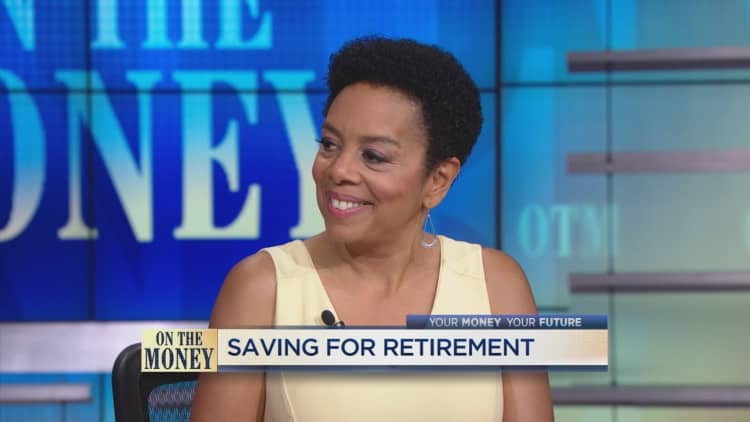There's a reason why you shouldn't pile all your cash into your 401(k): You'll be paying hefty income taxes in retirement.
This is because the money you sock away in that account during your working years is tax-deferred.
If your 401(k) makes up most of your savings, it means you could be paying a hefty income tax bill as you draw down in retirement. The top income tax rate is currently 37%.
Instead, it's best to have your nest egg in a combination of tax-free, taxable and tax-deferred accounts so that you can manage your tax bracket in retirement.

With the appropriate withdrawal strategy, you can even keep your income low enough to avoid higher Medicare premiums.
"What people do is pile everything into a pre-tax retirement plan, then they don't have a lot to do when they retire other than to pull the money out at ordinary income tax rates," said Gavin Morrissey, managing partner of Financial Strategy Associates in Needham, Massachusetts.
"The more diversified your tax characteristics are, the more leverage you have for better outcomes," he said.
Diversify your tax load
Withdrawals from your 401(k) and traditional individual retirement accounts are subject to income taxes and, if you take money out before age 59½, a 10% penalty.
Taxable accounts generate capital losses and gains when you sell your holdings.
See below for your income tax bracket.
Taxes on long-term gains range from zero to 20%, while short-term gains are taxed at the same rate as income.
Finally, Roth IRA and Roth 401(k) withdrawals are tax-free.
That's because you paid Uncle Sam when you made your contribution or when you converted amounts in your IRA to the Roth IRA.
Income sources
Here's how drawing down income from multiple accounts might work.
Let's say you're single, and your pension income puts you close to the top of the 12% bracket — $38,700.
You need a little more money to cover your expenses, but you want to do it without jumping into the 22% bracket.
In this case, you might turn to your Roth IRA. This way, you get the cash you need without the additional income tax bite.
More from Personal Finance:
Low interest rates could spur seniors to chase returns
What to do when hit with a surprise expense
3 retirement essentials that could keep more cash in your pocket
"You can choose whether you want the next withdrawal to add to your taxable income or you can keep yourself in your current tax bracket," said Marcy Keckler, vice president, financial advice strategy at Ameriprise Financial in Edina, MInnesota.
Here's another situation: You retired early enough that you don't need to take a required minimum distribution from your IRA or 401(k). You've also decided to wait to claim Social Security.
In that case, you might want to tap your taxable account instead, said Morrissey at Financial Strategy Associates.
Medicare premiums
If you can manage your income tax brackets, you can manage your premiums for Medicare Part B (outpatient care) and Part D (prescription drugs).
Medicare premiums in 2019 are based on your 2017 modified adjusted gross income. Costs go up for singles with an MAGI over $85,000 ($170,000 for married filing jointly).
Here's what you'll pay for Part B.
These are your Part D premiums.
Start here

The optimal tax-friendly strategy for you will depend on your own goals and financial needs.
Here's where to begin.
• Start with Social Security and any pension: Find out how these two sources of retirement income will affect your marginal tax rate. How much room do you have for additional income before your rate rises?
"That's the amount of money that you can take out of your 401(k) and IRA and remain in the same bracket," said Keckler at Ameriprise.
• Know when to tap the other buckets: "If your MAGI is approaching the threshold for higher Medicare premiums, having accounts that generate little tax are a great alternative," said Jeff Fosselman, a CPA and senior wealth advisor for Relative Value Partners in Northbrook, Illinois.
• Remember your goals: There's no rule of thumb for drawing down in retirement.
If you want to preserve one of your accounts for heirs, you and your advisor will need to hash out how this will affect your strategy.


